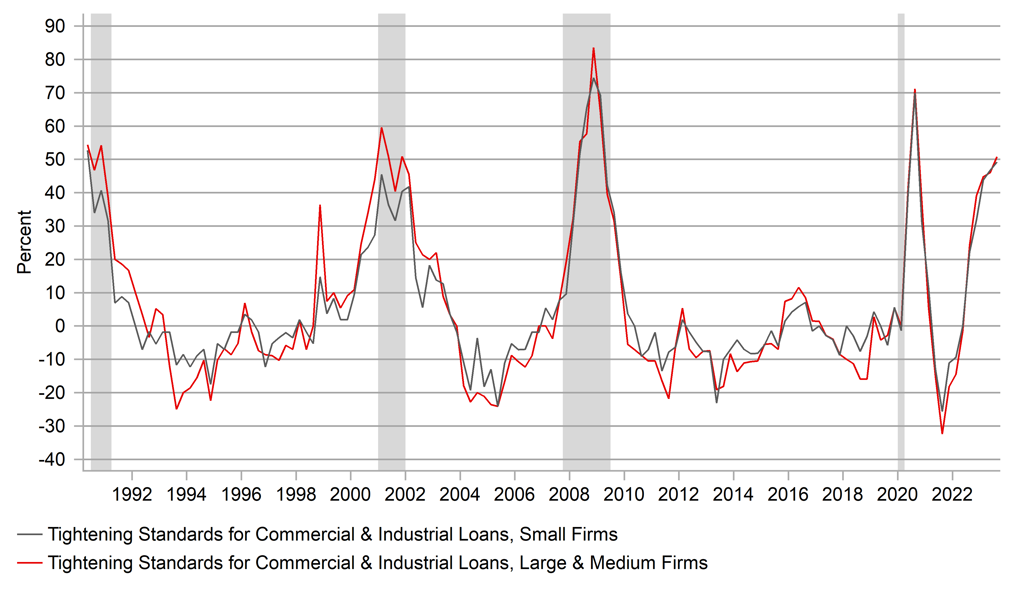RBA joins ECB & Fed in moving closer to end of hiking cycle
AUD: RBA leaves rates on hold & dampens expectations for further hikes
The biggest mover during the Asian trading session has been the Australian dollar following last night’s RBA policy update. It has resulted in the Australian dollar weakening by around -0.6% against the US dollar and -0.4% against the New Zealand dollar. After threatening to break above the 0.6800-level earlier in the month, the AUD/USD rate has fallen back within the narrow trading range between 0.6600 and 0.6800 that has been in place for most of the time since March. Weakness in the Australian dollar overnight reflects disappointment that the RBA decided to leave their policy rate unchanged at 4.10% which has dampened expectations for further hikes in the current tightening cycle. The Australian rate market is no longer fully pricing in one more hike from the RBA with around 16bps of hikes by the end of this year and only around 5bps hikes by the next policy meeting in September. The dovish repricing clearly highlights that market participants are more confident now that the RBA’s hiking cycle is close to an end which has weighed down on the Australian dollar.
The decision to leave rates on hold this month follows the release of the weaker than expected Australian CPI report for Q2 that had already dampened expectations for another rate hike today. The RBA’s accompanying policy statement emphasized that the decision to leave rates on hold will provide more time to assess the impact of prior rate hikes. The RBA has not ruled out “some further” tightening of monetary policy which will depend on how inflation and the economy evolve. The next policy meeting will be the last under current Governor Lowe before he is replaced by Deputy Governor Bullock which adds additional uncertainty to the policy outlook later this year. The statement noted that although inflation is declining, it is “still too high” and the labour market is “very tight”. The RBA’s updated forecasts were little changed and continued to show that the RBA expects inflation to slow to around 3.25% by the end of 2024 and to be back within the 2-3% target band by late 2025. The previous forecasts only covered the period to mid-2025 when inflation was forecast to be around 3.0% by then. While there has not been a significant change to the RBA forecasts, some market participants have highlighted that the RBA is now forecasting falling to within their target band by the end of the forecast horizon as a clear signal that the RBA is more comfortable that it has raised rates to sufficiently restrictive levels. Taking these latest developments into consideration, we are closing our long AUD/NZD trade idea. The rationale for the trade idea is no longer justified as monetary policy expectations are less likely to diverge between the RBA and RBNZ in the near-term. A less hawkish outlook for RBA policy will put a modest dampener on Australian dollar performance.
MODEST FURTHER TIGHTENING IN US CREDIT CONDITIONS

Source: Bloomberg, Macrobond & MUFG GMR
USD: Tighter US credit conditions making Fed cautious over further hikes
The main economic data release overnight was the Fed’s latest senior loan officer survey (SLOOS). It was conducted during the second half of June and the Fed would have had the results available to them ahead of last month’s FOMC meeting. The survey revealed that credit conditions had tightened further although only modestly and that demand for loans across firms and households had weakened. Fed Chair Powell has already stated at last week’s FOMC meeting that credit conditions are “tight and getting tighter”. One exception was lending standards for commercial real estate loans that have eased slightly but they remain very tight. Consumer loans also saw some easing in credit standards. For the 2H of this year, banks expect some additional tightening across all loan categories. The survey did indicate though that while loan demand remained weak, it improved across all categories except for consumer loans. The rebound in demand for loans for the strongest for commercial real estate.
Tightening credit conditions is one of the reasons why the Fed has become more cautious over delivering further rate hikes alongside building evidence of slowing inflation. There will be some relief that loan demand is beginning to pick-up and that the further tightening in credit conditions has been more modest in the latest SLOOS survey. Overall, the survey does not alter our outlook for the US dollar to weaken further this year. We expect the Fed to pause their hiking cycle soon in response to slowing US inflation, and building optimism over a softer landing for the US/global economy will help to encourage a weaker US dollar.
KEY RELEASES AND EVENTS
|
Country |
BST |
Indicator/Event |
Period |
Consensus |
Previous |
Mkt Moving |
|
GE |
08:55 |
German Unemployment Change |
Jul |
20K |
28K |
!! |
|
EC |
09:00 |
Manufacturing PMI |
Jul |
42.7 |
43.4 |
!! |
|
US |
15:00 |
ISM Manufacturing Employment |
Jul |
48.0 |
48.1 |
!! |
|
US |
15:00 |
JOLTs Job Openings |
Jun |
9.610M |
9.824M |
!!! |
|
NZ |
23:45 |
Employment Change (QoQ) |
Q2 |
0.5% |
0.8% |
!! |
Source: Bloomberg


